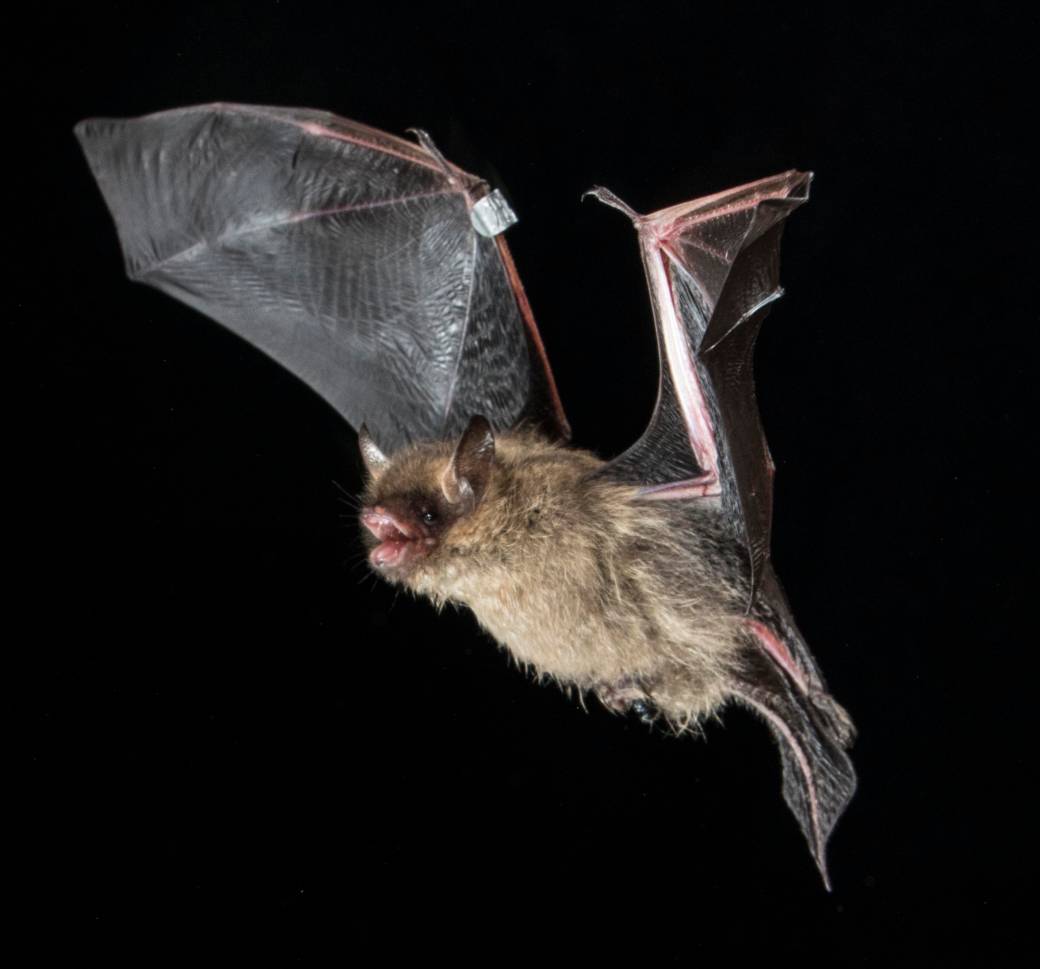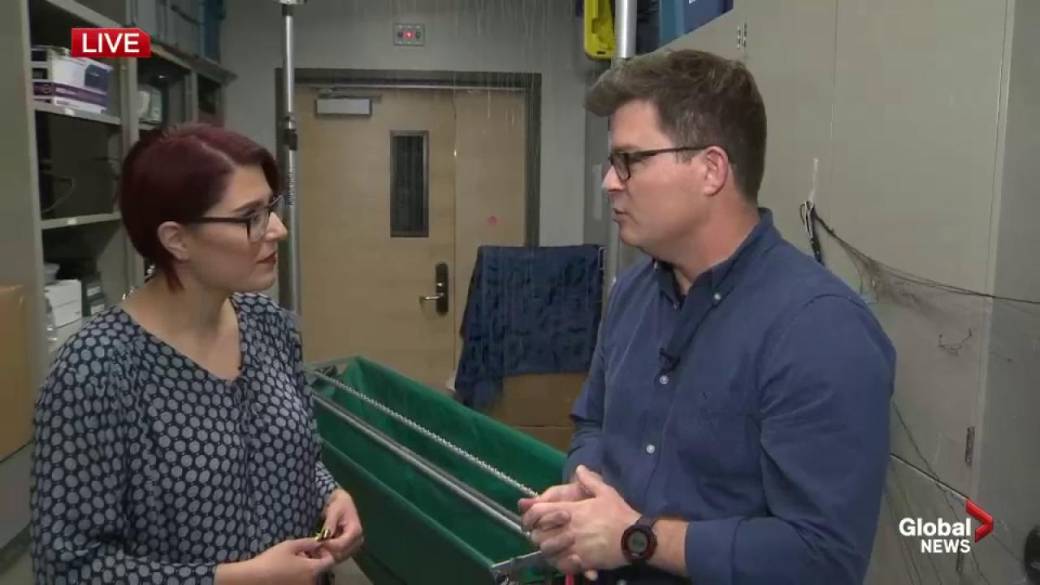The researchers say a deadly fungus that nearly wiped out a North American bat species has yet to spread to British Columbia, giving them valuable time to study whether probiotics prevent disease.
BC scientists have been investigating the effect of bacteria-laden dust on white-nose syndrome for the past three years.
Read more:
Bat conservation society in BC gets a funding boost
The condition kills bats by forcing them to wake up from hibernation and use their energy to cleanse the fungus from their bodies.
Little brown myotis bats were once considered the most populous bat species in North America. Disease has decimated them and the species was declared endangered by the federal government in 2012, just six years after the first case of white-nose syndrome was documented on the continent.
The first bat in Washington state with the syndrome was discovered in 2016.

Cori Lausen, a biologist with the Wildlife Conservation Society of Canada, said experts expected the disease to spread rapidly west as it did further east, but that did not happen.
“As far as we know, it’s contained in Washington and that’s good news for our bats and for our program, because we’re trying to get ahead of the disease and use a preventative or prophylactic approach, and that’s where the probiotic comes in.”
Read more:
Take a road trip? BC wants you to search for bats by hitchhiking
BC bats often raise their young in maternity roosts in the summer and that’s where researchers have been administering the probiotic since 2019.
Lausen said his team will spray the probiotic at three Vancouver-based research sites this spring.
She said scientists spray a small amount of water on a bat box followed by powdered clay containing probiotic cells. Once the bats enter the box, a layer of dust is transferred to their bodies and wings.
“The microbes just start growing on the wings along with all of their natural bacteria. This is similar to people taking probiotic pills, except the microbiomes we’re trying to improve are the ones in the wings because that’s where the fungus that causes white-nose syndrome grows,” he said.
Read more:
Public Asked to Help BC Wildlife Officials Fight Deadly Bat Disease
The probiotic is a combination of four bacterial strains and other studies have shown that it is effective in slowing the growth of the fungus in the bat.
The province is home to 14 confirmed species of hibernating bats, but the Wildlife Conservation Society program targets the big brown, Yuma myotis and little brown species because they are the most affected by the syndrome, Lausen said.

She said bat hibernation sites are mostly unknown on the West Coast, limiting research opportunities.
There have also been no confirmed cases of white-nose syndrome in Alberta, and one possible reason Lausen suggested is the hibernation setting. She said bats in the West probably don’t hibernate in large colonies like they do in the East, making them less likely to spread the fungus as quickly.
Read more:
White Nose Syndrome Found in WA State Could Spell Disaster for BC Bats
She described the probiotic as a “western-made solution” because most eastern scientists have focused on finding cures for animals that are already infected.
Scientists in Wisconsin, Illinois, are working on developing a vaccine, and Lausen said teams are considering mixing the probiotic and a vaccine in the future.
“In fact, they would work really well together because the vaccine requires the bats to eat it, and with the application of the probiotic, they often ended up consuming some of it, so we’re really looking at the potential for a dual purpose of combining them.” “That way, they might get a little bit of protection from the vaccine and a little bit of protection from the probiotic,” he said.
Lausen said the ultimate plan is to send kits to BC residents to spray the probiotic into bat boxes on their properties, though this likely won’t be possible for at least two years.
© 2022 The Canadian Press
Reference-globalnews.ca

